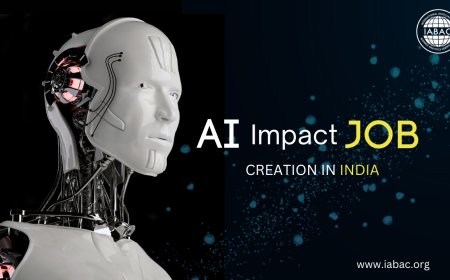The Evolution of Conversational AI and Natural Language Processing
Explore the fascinating journey of Conversational AI and Natural Language Processing evolution. Uncover the milestones, breakthroughs, and future prospects shaping human-machine interaction.

In a world that is increasingly digital and interconnected, the way we communicate with machines has undergone a remarkable transformation. Conversational AI and Natural Language Processing (NLP) have emerged as pivotal technologies that bridge the gap between humans and machines, enabling seamless and intuitive interactions.
Rule-Based Systems
Rule-based systems, representing the nascent stage of conversational AI and natural language processing (NLP), were characterized by their reliance on predefined rules and patterns to interpret and respond to textual inputs. In these early systems, human programmers meticulously crafted specific rules to guide the machine's understanding of language. The approach was rigid and limited, as the system could only respond effectively to inputs that precisely matched the established rules. One notable example from this era is the Eliza program, developed in the mid-20th century.
Eliza simulated a Rogerian psychotherapist by identifying keywords in user inputs and generating scripted responses. While such rule-based systems laid the groundwork for subsequent advancements, their lack of adaptability and scalability became apparent as the complexity of human language and interactions increased. Despite their limitations, these early endeavors set the stage for the evolution towards more sophisticated and flexible conversational AI systems.
Statistical Approaches and Machine Learning
In the evolution of conversational AI and natural language processing (NLP), a pivotal transition occurred with the adoption of statistical approaches and machine learning. During this era, researchers moved away from rigid rule-based systems and began leveraging probabilistic models and machine learning algorithms to enhance language understanding and generation. Rather than relying on predefined rules, statistical approaches allowed systems to learn patterns and relationships within vast corpora of text data. This shift marked a fundamental change in the adaptability and dynamic nature of language processing, enabling machines to handle more complex and nuanced conversations.
One notable advancement during this period was the introduction of Hidden Markov Models (HMMs) for speech recognition. These statistical models significantly improved the accuracy and versatility of systems converting spoken language to text. Moreover, machine learning algorithms such as decision trees and support vector machines found applications in various NLP tasks, including sentiment analysis and text classification. This departure from rule-driven frameworks laid the groundwork for more sophisticated conversational AI systems, setting the stage for the subsequent integration of deep learning techniques in the quest for even more advanced language understanding and generation.
The Rise of Chatbots
The rise of chatbots represents a significant milestone in the evolution of conversational AI, marking a departure from traditional rule-based systems to more sophisticated and adaptable interactions. Chatbots are essentially computer programs designed to engage in text or voice conversations with users, simulating human-like communication.
This shift was fueled by advancements in natural language processing (NLP) and machine learning, enabling these bots to understand context, nuances, and user intent. Early examples like Apple's Siri and Microsoft's Cortana demonstrated the potential of combining voice recognition and NLP for personalized assistance. Chatbots have since become integral in various industries, revolutionizing customer support, e-commerce, and information dissemination.
Their ability to handle routine queries, process large volumes of data, and operate 24/7 has made them invaluable tools for businesses seeking to enhance user experience and streamline operations. The rise of chatbots signifies a transition towards more interactive and responsive AI systems, bringing about a new era of human-machine communication.
The Deep Learning Revolution
Emergence of Chatbots: The rise of chatbots marked a pivotal shift in conversational AI, moving from rule-based systems to more sophisticated and interactive models.
Virtual Assistants: Virtual assistants like Siri, Cortana, and Alexa became early examples of chatbots, combining voice recognition, natural language processing, and machine learning to provide personalized assistance.
Improved Conversational Abilities: Chatbots evolved from basic, scripted interactions to more dynamic conversations, thanks to advancements in NLP and machine learning.
Mainstream Integration: Chatbots found widespread applications in various industries, including customer service, e-commerce, and information retrieval, becoming integral parts of websites and applications.
Enhanced User Experience: The goal of chatbots shifted towards enhancing user experience by providing quick and efficient responses, streamlining interactions, and offering 24/7 support.
Natural Language Understanding: Advances in natural language understanding allowed chatbots to comprehend user queries, leading to more contextually relevant and accurate responses.
Conversational Commerce: Chatbots played a crucial role in the rise of conversational commerce, facilitating transactions, product recommendations, and order processing through natural language interactions.
Conversational AI Today
In the landscape of modern technology, Conversational AI stands as a testament to the integration of artificial intelligence into our daily lives. Today, Conversational AI is not just a concept discussed in tech circles; it's a tangible and ubiquitous reality. Virtual assistants like Amazon's Alexa, Google Assistant, and Apple's Siri have become household names, seamlessly blending into our routines.
These AI-powered entities leverage sophisticated Natural Language Processing (NLP) algorithms to understand and respond to human queries, whether spoken or typed. Chatbots, another manifestation of Conversational AI, are now prevalent across websites, customer service portals, and various applications, streamlining interactions and providing instant assistance. The sophistication of these systems is evident in their ability to handle complex requests, from setting reminders and answering trivia to controlling smart home devices. As consumers, we engage with Conversational AI on social media, messaging platforms, and through voice-activated devices, experiencing a level of responsiveness and interaction that was once the realm of science fiction.
The technology's rapid evolution has made Conversational AI an integral part of sectors like healthcare, finance, and e-commerce, transforming how businesses engage with their customers. The power of Conversational AI today lies not just in its ability to understand language but in its capacity to comprehend context, discern intent, and deliver personalized experiences, marking a pivotal milestone in the evolution of human-machine interaction.
Challenges and Ethical Considerations
Challenges and Ethical Considerations in the realm of artificial intelligence (AI) are both profound and multifaceted. As AI technologies advance, they introduce a host of complex issues that demand careful scrutiny and ethical deliberation. One significant challenge lies in the potential bias embedded in AI algorithms, reflecting and perpetuating societal prejudices. The decisions made by AI systems are only as impartial as the data they are trained on, often inadvertently amplifying existing inequalities.
Moreover, the deployment of AI in sensitive areas such as healthcare, criminal justice, and finance raises ethical concerns regarding privacy, accountability, and the potential for unintended consequences. The opacity of certain AI models exacerbates these concerns, as the lack of transparency makes it challenging to understand how decisions are reached, hindering accountability and exacerbating distrust.
The transformative impact of AI on the job market is another ethical consideration. While AI has the potential to enhance productivity and efficiency, it also poses a threat to certain job sectors, necessitating a thoughtful approach to mitigate negative social and economic consequences.
The Future of Conversational AI and NLP
The future of Conversational AI (Artificial Intelligence) and NLP (Natural Language Processing) holds tremendous promise and transformative potential across various industries. Conversational AI refers to the development of systems that can engage in natural language conversations with users, mimicking human-like interactions. NLP is a key component of Conversational AI, focusing on the ability of machines to understand, interpret, and generate human-like language.
Key Aspects of the Future of Conversational AI and NLP
Advanced Natural Language Understanding: Future developments in NLP will enhance machines' ability to comprehend context, nuances, and sentiment in human language, leading to more sophisticated and context-aware conversational agents.
Multimodal Interactions: The integration of text, voice, and visual inputs will enable more comprehensive and intuitive communication. Conversational AI will evolve to process and generate responses across multiple modalities for a richer user experience.
Emotion Recognition and Response: Future systems may become adept at recognizing and responding to human emotions, making interactions more personalized and empathetic. This can have applications in customer service, mental health support, and various other domains.
Cross-Lingual Capabilities: Continued advancements in NLP will facilitate more effective communication across different languages, breaking down language barriers and enabling global accessibility and collaboration.
Improved Personalization: Conversational AI systems will become more adept at understanding individual preferences, learning from user interactions, and providing highly personalized recommendations or assistance.
Ethical Considerations and Bias Mitigation: As technology advances, addressing ethical considerations and mitigating biases in Conversational AI and NLP will be crucial. Efforts will focus on ensuring fairness, transparency, and accountability in AI systems.
The journey of conversational AI and NLP from rule-based systems to deep learning-powered models like GPT-3 has been nothing short of extraordinary. These technologies have transformed the way we interact with machines, making our interactions more intuitive and natural. As we look to the future, the potential for even more advanced and personalized conversations with AI systems is boundless, promising a world where machines truly understand and assist us in the most human-like ways. However, it is essential to approach this future with care, addressing ethical concerns and ensuring that these technologies benefit humanity as a whole.











































